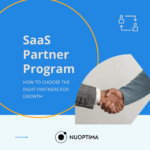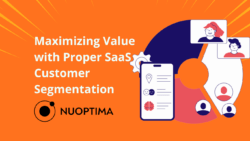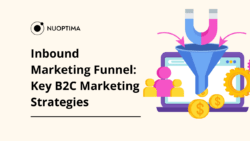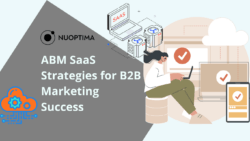According to SaaS Capital’s 2023 survey[1], businesses spend an average of 10% of their annual revenue on marketing activities.
Almost a tie with the amount SaaS brands spend on sales and administrative costs (15%). This implies that SaaS marketing isn’t a set of “spray and pray” activities but a well-tought out SaaS marketing plan that needs to constantly brings in ROI.
How does a SaaS company calculate, measure and optimize their SaaS marketing ROI? We will cover all that, and much more in this guide so you can reach industry benchmarks in 2025.
What is SaaS ROI? Understanding the Basics Components
First things first, let’s break down what SaaS ROI is, and why it is the most important metric and one of the key performance indicators for SaaS companies.
SaaS ROI is a performance indicator for the value of marketing investments compared to their costs. This value can be as straightforward as “How many leads did this ad generate” or as complex as “How did our blog contribute to our brand awareness strategy”?
As you can see, not all things are measurable. And we can’t measure directly every interaction someone has with out marketing efforts.
This overall formula can be a good starting point:
[(Revenue – Marketing Cost) / Marketing Cost] x 100 = ROI
Suppose your best SaaS marketing campaigns in Q1 2024 generated a revenue of 20,000 and the investments were 12,000.
20,000 – 12,000 / $12,000 x 100 = 66.67%
On every dollar spent on marketing, there is a return of $1.67 in revenue.
Now, according to the First Page Sage 2024 report[2], the benchmark for marketing campaign ROI (SaaS companies) is 31% for PPC and 702% for SE. As you see there is a big gap, as different channels have different ROI benchmarks.
To help you achieve product-market fit, check out the video “10 Steps Roadmap to Achieve Product-Market Fit for SaaS Startups.”
Still, these numbers directly influence marketing strategies and budget allocations. It helps marketers justify spending on specific SaaS solutions by linking them to tangible business outcomes like lead generation, customer engagement, and conversion rates.
Here are the key components of SaaS marketing strategy ROI:

Let’s see how we can calculate ROI for individual channels:
Calculating Your SaaS Marketing ROI for Different Channels
The top five marketing channels for SaaS brands are:
- PPC
- Email marketing
- Content marketing
- SEO
- Social media
1. PPC (Pay-Per-Click)
To effectively calculate the Return on Investment (ROI) for your PPC campaigns, calculate the total costs first. Usually, costs include ad spend (the sum of all costs for clicks or impressions). You can also include management fees (if you are using a third party, such as PPC agencies or designers, copywriters, or specific software).
To measure ROI for PPC you need to set up conversion tracking on your website/in Google Ads to trace sales or qualified leads directly back to the ad.
For businesses where single transactions translate into long-term customer relationships, consider estimating the lifetime value of the customers acquired through the PPC campaign.
Use the Multi-Channel Funnels reports in Analytics to see how your PPC ads assist conversions that might initially be attributed to other channels.
If you spent 1,000 on Google Ads and tracked sales worth 3,000 directly to these ads, that means that for every dollar spent on the PPC campaign, you earned two dollars in return, which is a 200% ROI.
Even though this is the “most straightforward” channel in terms of calculating ROI, keep in mind that different attribution models can give different results. Here is an overview of attribution models, and we will write more on incrementality testing in a while.
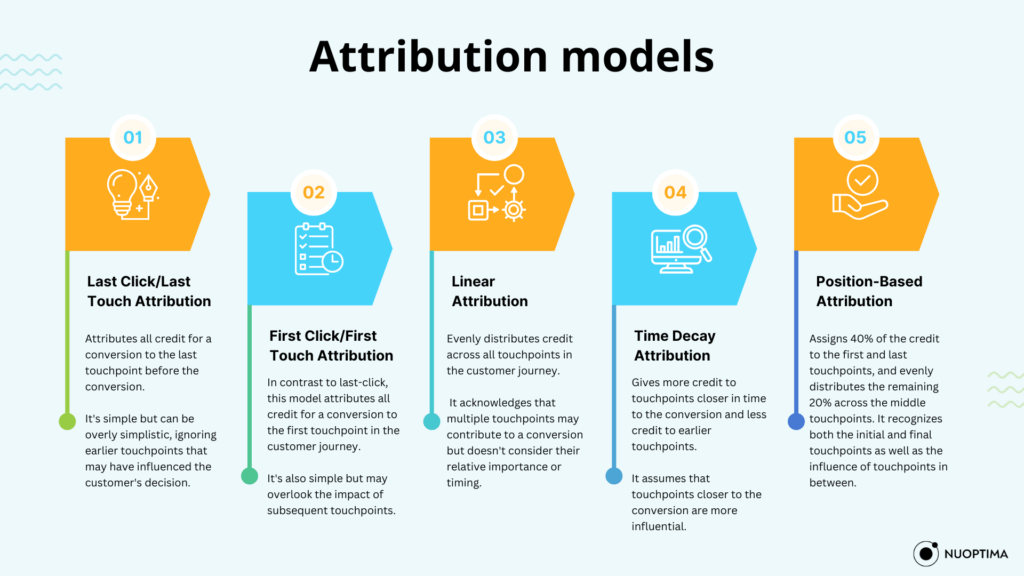
2. Email Marketing
Email marketing has more indirect factors that can be counted in “costs”, such as:
- Platform costs: Monthly or annual feels for your email marketing platforms such as Mailchip.
- Content and visual costs: Copywriting, graphic design, etc
- Personnel costs: If you have a dedicated person/team for email marketing
With email marketing you track ROI by placing trackable links in your emails to monitor how many sales each campaign generates directly. This involves assigning unique tracking codes to links in the emails and setting up goals in your analytics platform.
Important: Sometimes, emails contribute to revenue generation indirectly, by nurturing leads that convert later. It’s challenging to quantify but important to recognize.
If executed successfully, email marketing can be one of the most cost-effective marketing channels. Let’s say a total cost of $200 and generate sales worth $1,200. For every dollar spent on the email marketing campaign, you received five dollars in return, resulting in a 500% ROI.
3. Content Marketing
Calculating ROI for content marketing can be more complex due to its indirect influence on conversions and its long-term benefits. Factors to consider here include content creation, distribution and operational costs.
Here’s a detailed approach:
You can track new customers generated by specific content using conversion tracking or analytics tools such as Google Analytics. Plus calculate the average revenue generated from each customer over their relationship with your company.
If 100 free trial signups from a blog post become paying customers with an ACV of $1,000, the return from your content marketing strategy would be calculated as
100 ×$1000=$100,000
You can also compare organic results vs paid results. I use tools like Ahrefs or your historical data to estimate the cost of generating equivalent organic traffic through paid ads, known as Traffic Value.
To calculate content marketing ROI, multiply the monthly traffic value by the content’s expected lifetime in months to estimate its total value. If the monthly traffic value is $600,000 and the content’s useful life is estimated at 24 months, the total value is:
$600,000×24=$14,400,000
One last trick is asking your customers for feedback. Before signing up ask where they landed from (PPC ad, blog post, social media, etc). With this information, you can track real-time data and figure out which marketing activities and channels have the highest ROI.
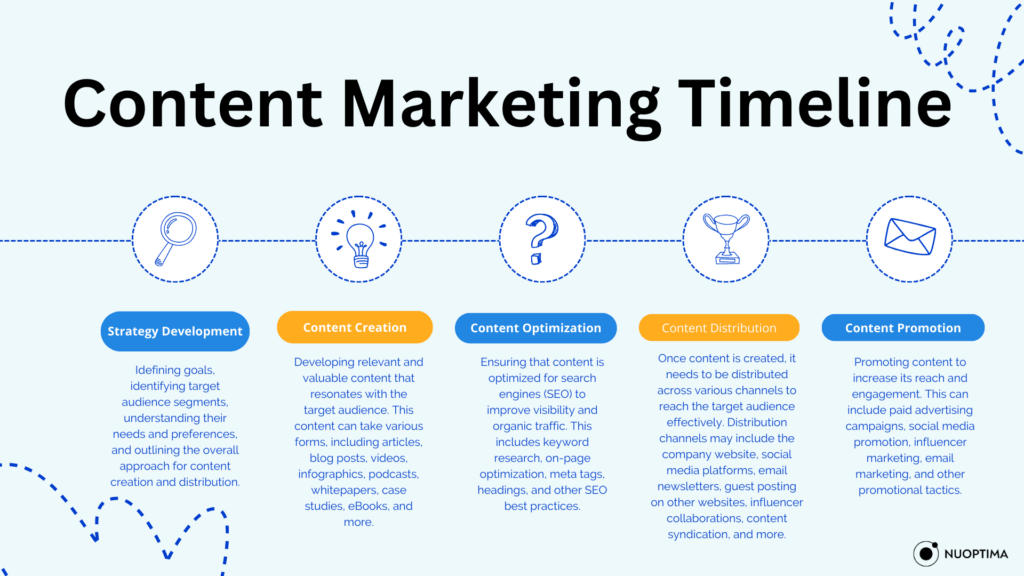
4. Social Media
Before calculating your ROI for social media you need to calculate the costs of ad spend, tools, and personnel costs. Running social media marketing often includes a team of specialists, a budget for social media ads, and some management tools like SproutSocial. It’s also important to recognize the role of dark social—interactions happening in private channels like messaging apps and emails, which are harder to track but still contribute significantly to overall brand engagement.
Read more about budget allocation in this guide to B2B SaaS marketing budget.
The easiest way to calculate ROI accurately is to directly track with specific promotional codes placed in social media campaigns, direct product links in posts, or tagged campaign URLs which can be analyzed for conversion rates.
You can use GA4 to track traffic from social media to your website or social media management tools for social media activities and social media engagement rates, and ROI for specific posts or campaigns.
When we apply our generic formula, we can get some data. Assume we invested $900 in your overall social media efforts, including ads, tools, and team costs. Suppose these efforts directly generated sales worth $3,500. This means you get a 280% return on your investment in social media marketing.
Keep in mind that brand engagement, such as likes, shares, and comments, can also indirectly contribute to revenue, and those aren’t measurable.
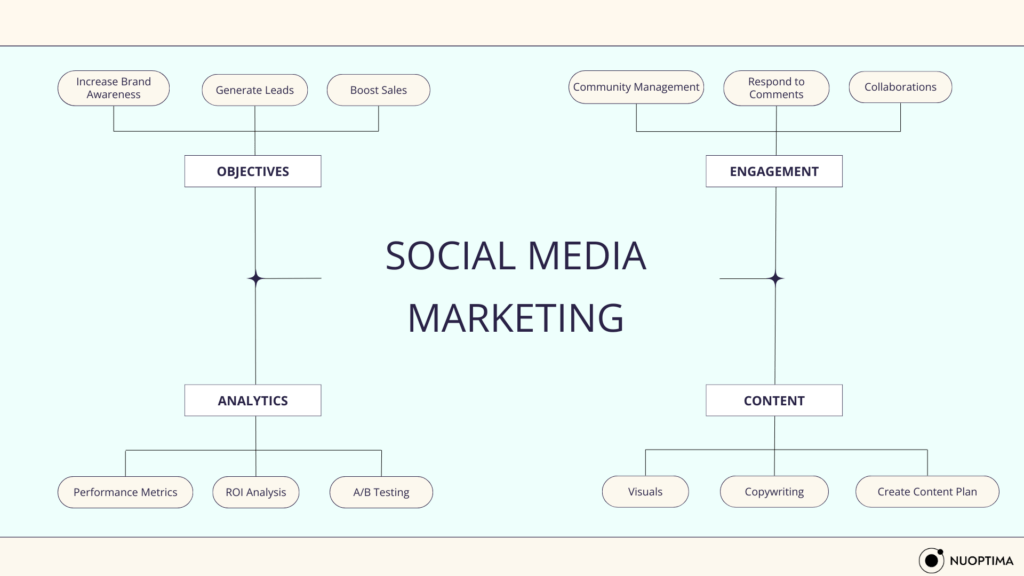
5. SEO (Search Engine Optimization)
According to First Page Sage’s report[3], SEO is the highest ROI channel for SaaS brands. Let’s see how we can calculate ROI for your SEO efforts.
First, check how many visions has SEO brought to your website with GA4, GSC and SaaS SEO tools. For the sake of an example, let’s use an average of 50,000.
With Google Analytics, you can determine the SaaS conversion rate for your website. Let’s assume a conversion rate of 2% for your SaaS product, earning a total of 1,000 new customers.
If each new customer contributes $150 in profit annually (perhaps this is your gross margin per customer), then the total profit from these SEO efforts would be:
1,000 x $150 = $150,000
Now for costs, let’s say you’ve spent $8,000 on your SEO efforts during the year, which includes payments for SEO software, consultant fees, content production, and other related costs.
With our generic formula and these examples, we can say for every dollar you invested in SEO, you received about $17.75 back in profit.
Always take these calculations with a grain of salt. They are useful for budget allocation and channel effectiveness calculations, but they should be a starting point. The ROI of marketing efforts isn’t always quantifiable, and often, there are a lot of invisible results.
If you are a startup, you will find this SaaS startup marketing guide useful. However, if you’re looking for specialized guidance, NUOPTIMA, a B2B SaaS SEO Agency, can help tailor your SEO strategies to better fit your needs and enhance your ROI.
One thing is for sure, you can always compare whether or not you are growing, acquiring more MQLs and increasing your annual revenue. With these marketing strategies below, you will certainly notice a positive streak in your reports for your B2B SaaS.
10 Strategies For Boosting your ROI
Here are ten concrete strategies you can implement to improve your ROI and meet all your annual marketing objectives.
1. Perform Incrementality Testing for PPC
We already mentioned above how different attribution models track conversions, which often won’t reveal the bigger picture. If we are only taking into account the last click, how can we accurately measure the impact of all the things that led to that sale?
Would a sale occur with and without our PPC campaign? Until recently, we couldn’t really tell. With incrementality testing, you can test and measure more accurately.
The main goal is to identify the incremental impact—additional conversions or revenue directly caused by the PPC campaigns.
To perform these tests, you will need specific tools, expertise and a dedicated budget. But, in a nutshell:
- Split your audience randomly into two groups: one that will see the ads (treatment group) and one that will not (control group).
- Alternatively, use geographic segmentation to test ads in similar markets by running campaigns in one region while withholding them in a comparable region.
- Launch your PPC campaigns as usual to the treatment group while withholding them from the control group. With your regular tracking tools, you can monitor the behavior and conversions of each group.
- After the test period, compare the conversion rates between the two groups. The difference in performance metrics represents the incremental lift or the true effect of your PPC advertising.
Even though these tests aren’t easy to execute, they provide real, measurable results in seconds. Once you know which campaigns/channels perform well, you can easily invest more or allocate your current budget – a great way to forecast your ROI!
NUOPTIMA is a SaaS PPC agency that will help you streamline your PPC efforts.
To gain further insights on ROI strategies, listen to an engaging conversation on this topic in the Nuoptima SaaS Podcast featuring Deepak Prabhakara from Boxy HQ.
2. Start with Affiliate/Referral Marketing
Affiliate/referral marketing is a great way to boost your brand’s visibility and get more MQLs. By using other people to promote your SaaS to their audience, you are increasing your chances of getting to your target audience.
Plus, this strategy is very risk-free. The benefits are numerous, and you only pay a portion of your sale if and when it occurs.
Read this article on SaaS affiliate marketing for more information, strategies and best practices.
3. Be Consistent with Content Marketing
As mentioned above, content marketing and SEO are the best channels for generating steady ROI. SaaS content marketing is a vast game field for experimenting with different ROI strategies, but let’s present one that has led to proven results.
Optimizing your “service or feature pages” is definitely an undervalued tactic for content marketing success. Keeping in mind that they should have keywords that directly target your ICP and potential customers, those are some of your most important pages. For companies looking to enhance their messaging and boost conversions, partnering with a SaaS copywriting agency can provide a significant advantage.
Have a dedicated page for every feature/tool you offer, and make sure to:
- Emphasize customer pain points
- Highlight your product benefits
- Promote success stories
- Elaborate on use cases
- Share where they can learn more
- Add multiple CTAs and banners for faster conversion
A lot of SaaS brands don’t implement this regularly as part of their content marketing efforts, but landing and feature page optimization is the #1 strategy for boosting your ROI. Tons of customers fall through the cracks because they are undereducated or not convinced to click “buy”.
If you don’t want to worry about your marketing efforts contact our SaaS content marketing agency.
4. Upsell and Cross-sell through Email Marketing
SaaS email marketing has many use cases, from warming up leads to engaging and retaining customers. One of the best ways to boost your ROI, and increase LTV and customer loyalty is exactly by using cross-selling and upselling techniques in your emails.
We are targeting our own customers here, and this is useful only if you have a warmed-up email customer base and multiple tools/pricing plans to sell.
With user behavior and email marketing tools, you can target customers with educational emails that clearly tell them the difference between your features/pricing plans and how they benefit from buying them.
You can also provide a discount or individual pricing plans for users that showed interest.
It is the easiest to sell to the person who already uses your product, because it takes less convincing.

5. Landing Page Optimization (A/B testing)
SaaS landing page optimization includes comparing different versions of a landing page to determine which performs better in terms of converting visitors into leads or customers. Here are the key elements you should A/B test:
- Headlines: Test different headlines to see which one is user-friendly and converts better.
- CTAs: Experiment with various CTA texts, colors, and positions to see which ones users click.
- Images and videos: Compare different images or video placements to analyze engagement and conversion impact.
- Page layout: Modify the layout design to test structural changes and their effects on user behavior.
-
Content: Test variations in content length, style, and messaging to determine what best communicates your SaaS value.
6. Offer Different Pricing Models
A portion of your users will always skip your tools because of the price. Price reflects the perceived value of your product. If customers think they will have a good ROI with your product, they will purchase it no matter the price.
However, if you want to expand your target audience, you should offer different pricing models. You can divide them according to the number of people or number of features. In that way, smaller/bigger teams and people using just one feature will have more reasons to convert.
You can use email marketing or content marketing to share your different pricing models.
7. Have Free Plans/Trials
Speaking of different pricing models, giving your target audience a chance to try your product is a must these days. Especially if you have a higher pricing, people are less likely to give you their trust.
With a free trial or free plan, users have an opportunity to test your product on their own and decide whether it is a good fit for them. Slack converts 30% of their freemium users into paid[4], so this, which means this strategy is efficient.
Including a CTA for your content marketing with “Start a free trial” is more appealing to the users than CTAs that indicate they have to pay right away.
8. Implement Customer Surveys
Integrating mini customer surveys into your marketing activities can help measure what works/ and what doesn’t. Before signing up, you can survey customers where they came from, to have your own statistics on the efficiency of your marketing channels and ROI.
9. Start Communities
The last channel you can take advantage of is your own mini community. Like with email marketing, you can retain customers and cross-sell. In this community (Facebook/Discord/Slack group), you can get more insights into what marketing touchpoints your new community members come from.
10. Collaborate and Integrate with SaaS Businesses
Tapping into a similar target audience is one of the best strategies in 2025. By integrating your tool with other software or co-hosting a webinar with other software brands, you can promote your product to an audience already warmed up. These marketing activities take time and resources but pay off in the long run.
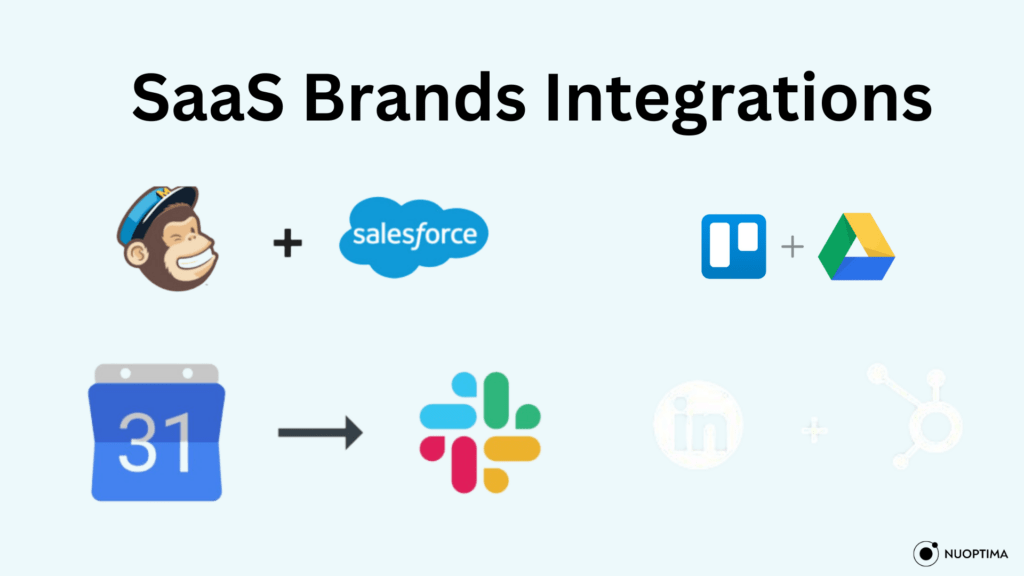
Learn about startup funding and growth strategies by tuning into the Nuoptima SaaS Podcast featuring Einar Vollset from TinySeed.
Conclusion
This article covered SaaS marketing ROI from A to Z. With examples, formulas and proven strategies, you will understand and increase your ROI in 2025.
Regular analysis and adjustment of your strategies in response to market trends, customer feedback, and business growth stages will help maintain a competitive edge. Also, NUOPTIMA is here to help you stay ahead with maximum SaaS marketing ROI.
Book a free 30-minute call with our experts.
FAQ
The standard ROI varies widely across industries, but a common benchmark is a 5:1 ratio, meaning $5 in revenue for every $1 spent on marketing. However, for maximum-efficiency campaigns or industries, this ratio can go as high as 10:1.
SaaS companies typically allocate between 15% to 25% of their revenue on marketing. This percentage can be higher, up to 30-40%, for those in rapid growth phases or targeting aggressive market expansion.
Email marketing often yields the highest ROI, with averages suggesting a return of $42 for every $1 spent. This high ROI is attributed to the personalized and targeted nature of communications.
To determine a B2B SaaS marketing budget, allocate a percentage of your revenue, typically between 15-25%, considering your growth stage, market competition, and customer lifetime value. Adjust this percentage based on your specific business goals and past marketing performance.
ROI in SaaS is calculated by subtracting the marketing cost from the generated revenue, dividing it by the cost, and then multiplying it by 100. It’s important to consider customer lifetime value and recurring income in this calculation for a more accurate picture.
References
- https://www.saas-capital.com/blog-posts/spending-benchmarks-for-private-b2b-saas-companies/[1]
- https://firstpagesage.com/reports/saas-benchmarks-report/[2]
- https://firstpagesage.com/reports/digital-marketing-roi-statistics/[3]
- https://medium.com/@cloudapp/how-slack-converts-30-of-their-freemium-users-into-paid-customers-b36081b18734[4]
